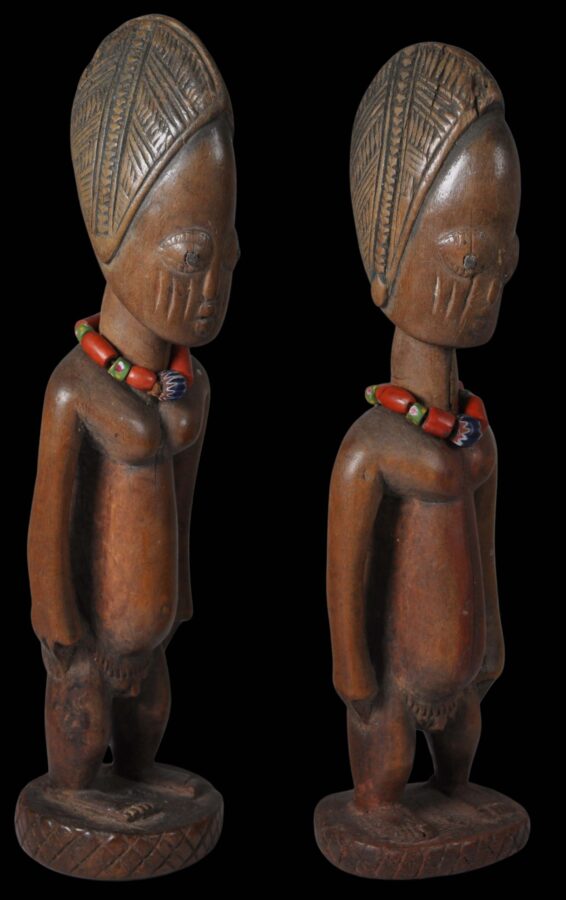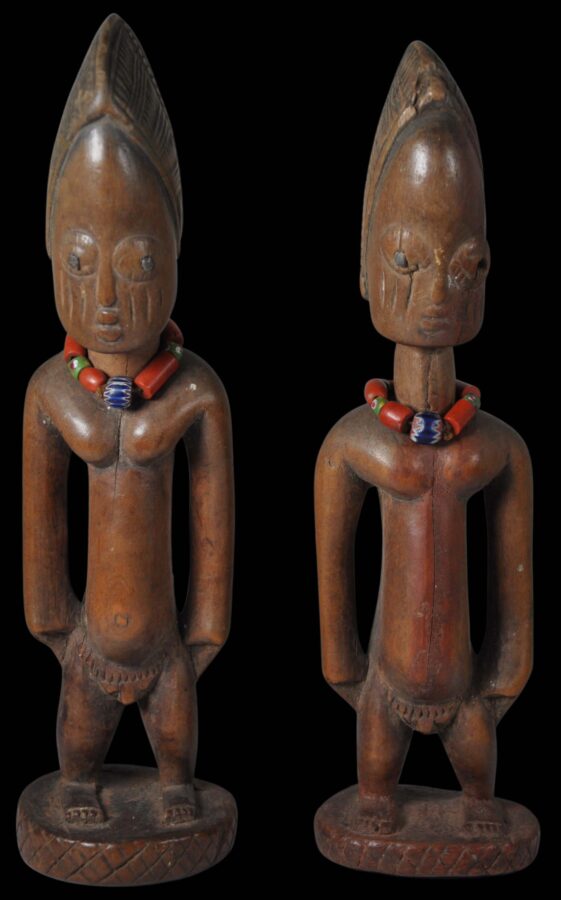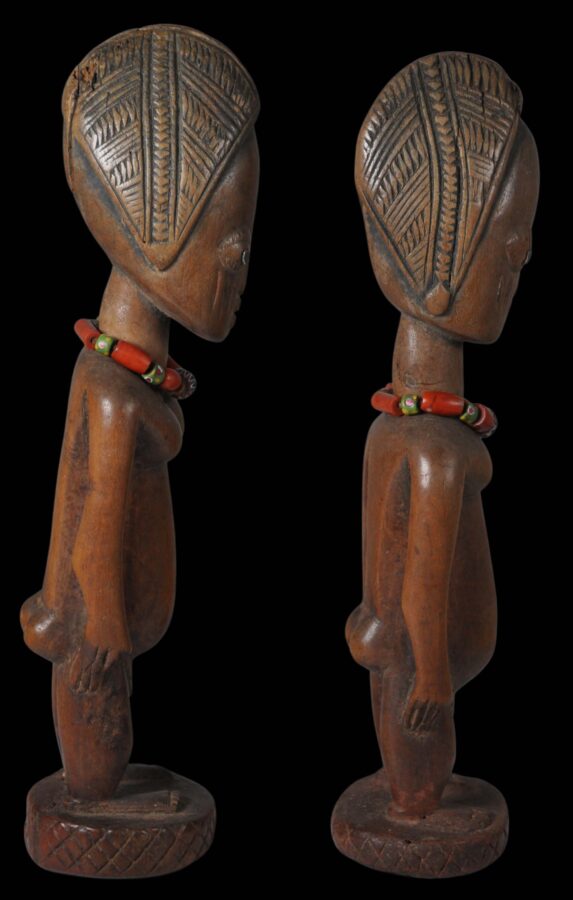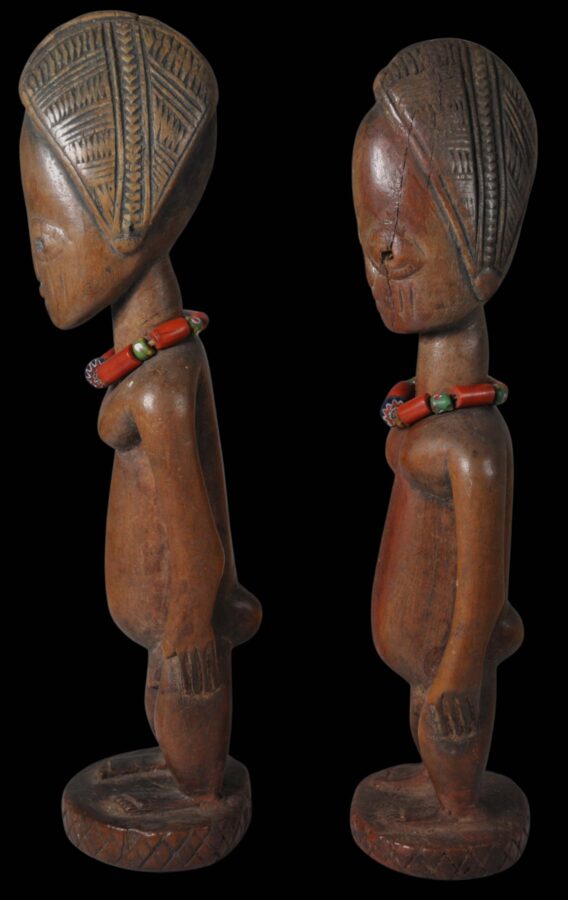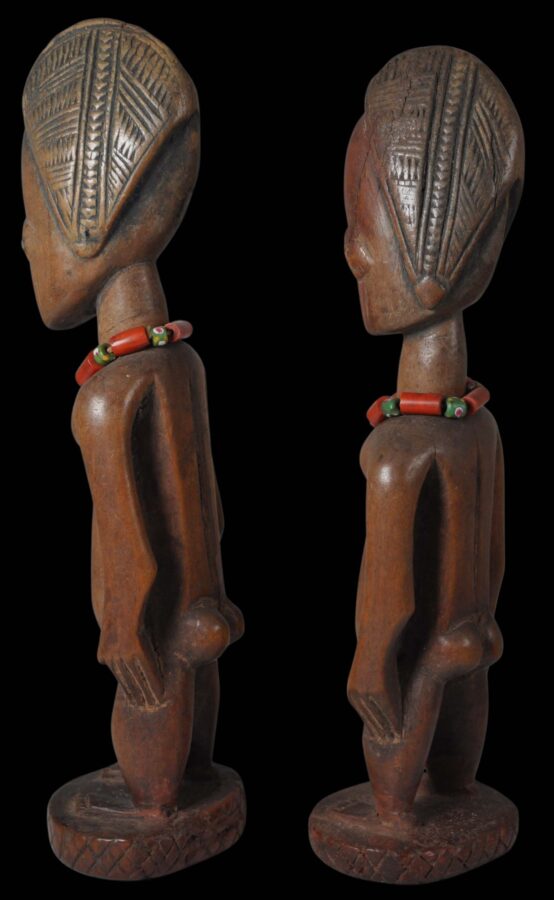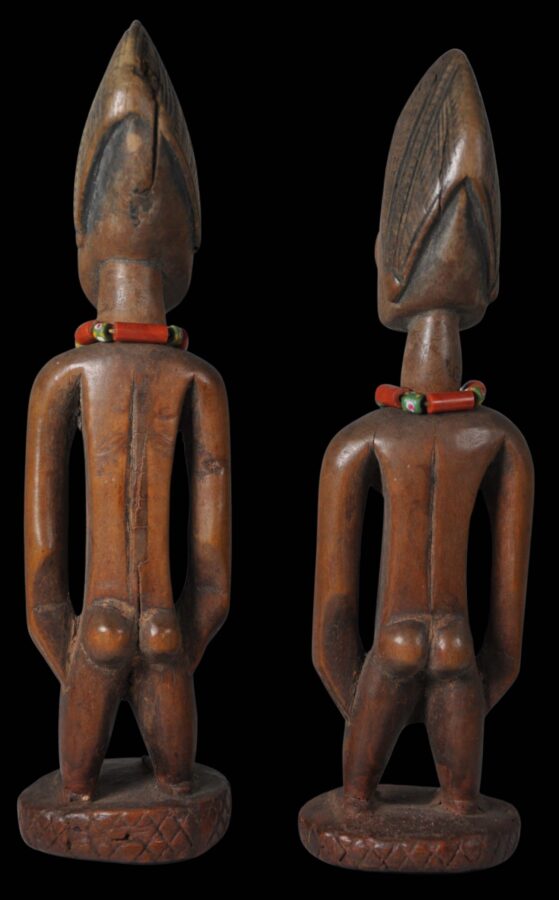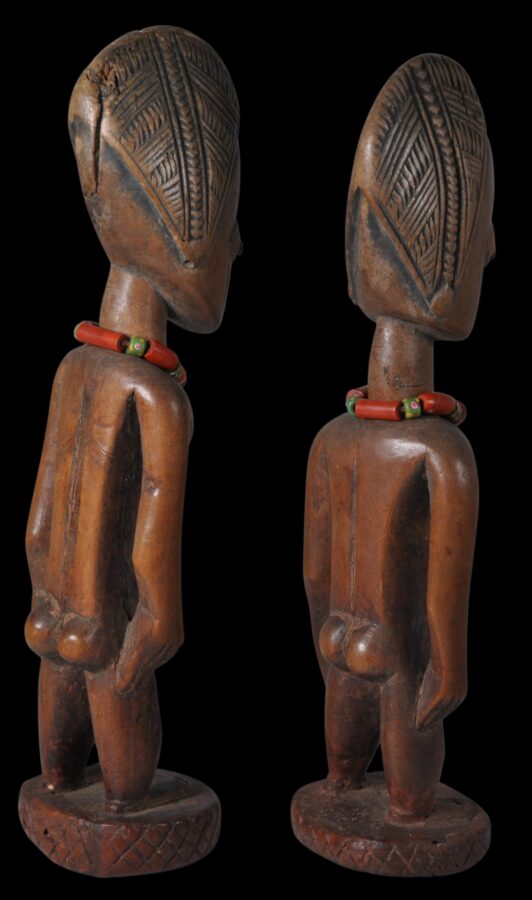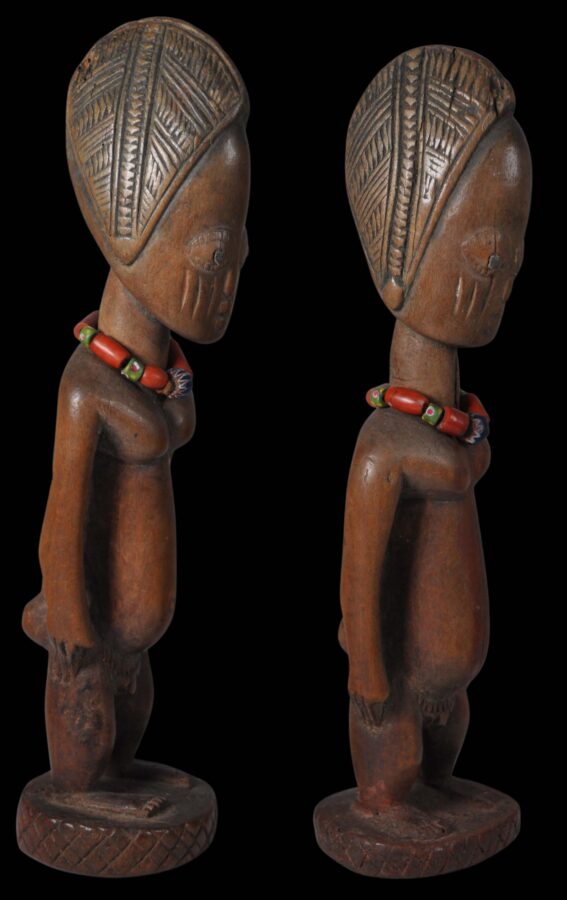Enquiry about object: 9642
Unusual Pair of Male Ere Ibeji Twin Figures with Head Caps or Bonnets
Yoruba People, Ilorin Region, Nigeria early 20th century
heights: 25.8cm and 25.3cm, combined weight: 341g
Provenance
private collection, UK
This pair of male Ere Ibeji twins have marvellous patinas, with contours softened from handling, caressing and bathing. Their significant age is obvious. Also, they are a clear pair and are essentially identical.
Both stand with hands just past their narrow hips, with legs apart. Their faces are elongated, with wide, almond-shaped eyes,and full pursed, protruding lips.
The eyes are bulging and have heavy, thick eyelids decorated with incised eye lashes. Iron nails or tacks (now very worn) serve as pupils (one is lost).
Both have large heads: the over-sized head is deliberate – the head is where the spirit resides. Among the Yoruba, the over-sized head is associated with one’s destiny, and can be a measure of one’s likely success or failure. Large heads, relative to their body sizes, are also a feature of human babies and infants.
Each has three pairs of scarification marks on each cheek.
Unusually, each has not been carved with hair but instead wears what is known as dog ears caps. These are typical in the regions of Oshogbo, Ilorin, Ila Orangun and Osi Ilorin. The caps show weaving designs, are pulled tight over the head, and cover the ears.
Each stands on a raised, round platform. Each has been incised with cross-hatching.
Both wear necklaces of trade beads – included among these are blue, red and white chevron beads made in 19th century Venice for the African market.
Each has an incised triangular patch of pubic hair over small male genitalia.
The base shows remnants of tukula powder. This powder was ground from tukula wood and was both a cosmetic and a protection from insects and from the sun. Tukula also was believed to have healing properties and magical powers.
Yoruba people have the highest dizygotic (non-identical) twinning rate in the world. The birth of twins amongst Yoruba women are four times more likely than anywhere else. Unfortunately, the mortality rate of the twins also was high. Ere Ibeji figures were carved as spiritual representations of the twins who died. These figures were commissioned from village carvers, who were also often highly trained priests (Babalawo). The images were carved as adults, rather than as the deceased infants. It is common in African sculpture that representations of children are made with adult-like qualities, including elaborate coiffures, scarifications on the face, fully developed breasts (on female figures), pubic hair and prominent genitalia. They were usually placed on a shrine dedicated to Elegba (a divine messenger deity) in the living area of the house and fed, bathed and dressed regularly. These figures were particularly special to the mother, who kept them close to her and caressed the figures in a loving manner, hence the wear that genuinely old examples exhibit.
The example here are in fine condition and show ample wear and age. There is some light, shrinkage-related cracking.
References
Bacquart, J. B., The Tribal Arts of Africa, Thames & Hudson, 1998.
Fagg, W. and J. Pemberton, J., Yoruba: Sculpture of West Africa, Collins, 1982.
Panini, A., Middle Eastern and Venetian Glass Beads: Eighth to Twentieth Centuries, Skira, 2007.
Polo, F., Encyclopedia of the Ibeji, Ibeji Art, 2008.
Rowland, A., H.J. Drewal, and J. Pemberton, Yoruba: Art and Aesthetics,Museum Rietberg, Zurich, 1991.


